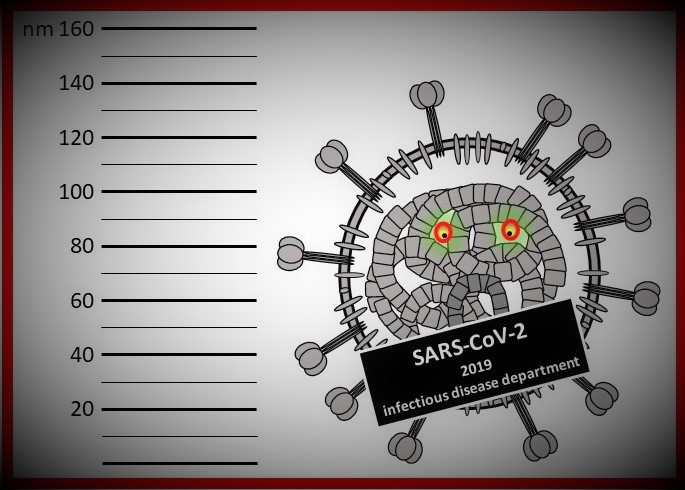SARS-CoV-2 – Disease: COVID-19
NOT WANTED !
Origin: Animals (most likely bats, probably transmitted via pangolins)
Family background:
There are several – more or less dangerous – siblings infecting humans:
- SARS-CoV, extremely dangerous, went undercover due to strong prosecution, current residence: Unknown.
- MERS-CoV, dangerous, currently undercover, in camels and dromedaries.
- Four more CoV siblings are considered mostly harmless, circulating as common cold viruses.
- Further siblings cannot be ruled out, they may be considered harmless, otherwise we would have found them.
- Numerous relatives are observed in the animal kingdom.
Size: around 120 nanometers, corresponding to 0,00000012 meters. To get a grip on the different sizes, please see the following illustration:


Specific characteristics: Enveloped virus, i.e. it is inactivated by detergents such as soap or laundry detergents.
RNA-virus: It carries its own copy machinery, a possible weak point of the virus.
Symptoms: Sore throat, head and bone aches, fever, pneumonia, dyspnea, there are numerous other symptoms….
Risk groups: People with chronic diseases, f.e. of the respiratory tract, people suffering from immunodeficiency (f.e. undergoing chemotherapy).
Who is affected: All age groups!
Case fatality rate, CFR: 0,5 % to 9 %, depending on the screening density and the treatment options.
Distribution: Each infected person on average may infect about 3 more people.
The virus’ way into the body: Via droplet infection or via fomites (smear infection), followed by a docking of the virus to a specific receptor (ACE2), which is found in several tissues and organs. Thus, the virus may affect several organs leading to numerous symptoms.
Problem: The receptor is found in numerous mammalians. This means the virus may evade into the animal kingdom, thus providing a future viral reservoir.



